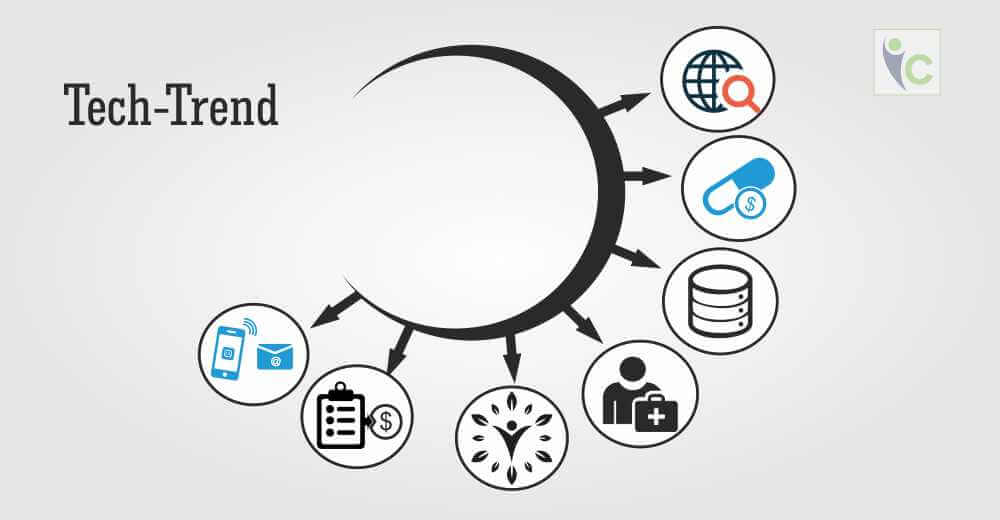The global practice management system market is predicted to grow at a high single digit CAGR to reach $247 million by 2018. The factors driving this growth of the market include the growing need to integrate healthcare systems, firm government support and increase in patient awareness and need for better healthcare. The gradually increasing interest towards patient-centric care approach, cloud-based Practice Management (PM) models, along with the emerging markets present huge opportunities for growth.
Let’ look at some of the savvy trends and tools that will help you bring your PM strategies into the new age:
Automated SMS Alerts
Calling to remind patients of their upcoming appointments is the biggest time killer in the average medical office. This time could be spent interacting with patients in person. The best solution to this problem is texting. SMS is a cheap and effective way of reminding patients about their appointments and can in turn prevent client’s loss of money. SMS is almost always delivered to the right person. Moreover, it can also be automatically programmed each day so the staff doesn’t have to do anything but press a button. You can also use SMS to send weekly special offers or healthcare tips.
Practice Management Software
There are integrated solutions that make appointment and database management easy for even the most technologically challenged practitioner. As it becomes increasing important to stand out from the competition, effective and automated database management is a practical and easy solution to save ample of time and resources.
Electronic Records Management
This can help streamline your practice’s record keeping, and reduce the amount of space you would need to keep the physical copies, thus saving money. A robust solution will allow automatic Cloud syncing and integrate with your accounting software for easier bookkeeping.
Wellness Provider
Professional exhaustion has become a universal issue as healthcare providers take on more responsibilities to achieve value-based care. Given the scale of the problem, many healthcare organizations are working to enhance employee wellness and engagement. A happy staff leads to better productivity, professional satisfaction, and improved patient experience and engagement.
Patient Expectations for Service
The patient experience scope has broadened, and we are now analyzing the overall care delivery model. There is a need for a remodel of practices to meet the increasing patient demand for immediate access, convenient hours, and multiple options for communicating with the physicians. The standard for services received in a physician’s office is no longer set by other medical practices, but instead by other service industries. This means that patients are increasingly mobile and interested in integrating technology into their personal care experience. Physicians and practices are integrating technological and virtual patient care solutions into their delivery model.
Increased Use of Data
The shift toward value-based care requires enhanced data- tracking abilities that will both monitor and report on the larger system-based trends and broad practice population trends. In addition, they will also provide a sophisticated real-time look at patient populations defined as at-risk, while identifying patients in danger of becoming at-risk. The next generation of EHR data reporting is capable of prioritizing enhanced user experience, both in ease of use and ease of trend identification. This may include real-time patient monitoring, useful integration of wearable device information, and the use of artificial intelligence for proactive identification of patient needs and at-risk patients.
Continued Shift to Value-Based Care
The shift to value-based care is increasing and the commercial insurance is similarly transitioning toward models that shift risk to physicians. With incentives for providing care that demonstrates value, these models emphasize the enhanced team-based care environment. This requires innovations in how practice teams interact with patients and how technology is used to monitor and track patients, including those not currently considered at-risk. Care will become more personalized.
Drug Costs
Pharmaceutical Drug cost controls are expected at every level of the system. Physician practices can expect to see a continued emphasis on health plan cost control mechanisms, such as prior authorization. With this issue looming large across the healthcare landscape, other control mechanisms are mitigating the administrative burden at the practice level.
Optimized Website
A well-maintained website is an important tool for your Practice. You can include an enquiry or get a quote form, or offer a free e-book download to build your email marketing database. Moreover, you can offer appointment scheduling and confirmations on your website, have a live chat feature where users can ask simple questions, provide a resources area for posting useful healthcare articles and information to clients and prospects, and consider a client portal with secure logins where you can provide a forum or treatment history.
There are many ways to take advantage of trends in Practice Management. In the coming years we expect to see a rise in the use of Cloud-based and automated systems and software as well as shift towards embracing digital marketing efforts as part of effective Practice Management.











